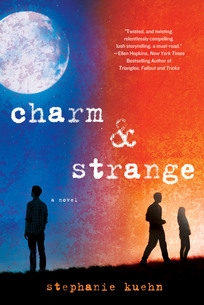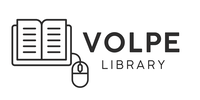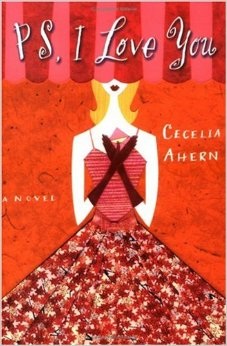Expanding Your Literacy Toolkit: Young Adult Literature + Judeo-Christian Religious Allegory3/22/2015 Charm & Strange by Stephanie Keuhn “I’m trying to get to Eden, but I forgot a flashlight.” (Keuhn, Location 716) Much of the literature we read in school focuses on establishing the difference between right and wrong, truth and falsehood, real and unreal. Stephanie Keuhn’s Charm & Strange (2013) is an incredibly powerful and wonderfully rich take on how the brain handles and processes information, and how outside forces can blur our understanding of what is real. Many well known authors use Judeo-Christian allusion and allegory in order to explore these truths (C.S. Lewis, Thomas Hardy, for example). While you can certainly read Charm & Strange without any prior background knowledge in religion, it does offer the reader an enriched understanding of the text. Charm & Strange: Examples of Religious Symbolism in the Text Charm & Strange is about a teenage tennis player named Andrew Winston Winters. He has a really difficult life. He and his siblings are sexually abused by their father and in an effort to escape the emotional suffering caused by this abuse, Andrew, his older brother, and his seven year old sister decide to attempt suicide- only Andrew doesn’t go through with it. In the years following their death Andrew suffers mentally and physically. He has few friends at his school- aside from Jordan, a girl who is new to the school, and is entirely ostracized from everyone else. When Andrew’s mental health declines, and he begins to hallucinate that he is changing into a wolf, Jordan drives Andrew to a mental health facility so that he can receive help. The book is filled with religious allegory and symbolism, starting first with Andrew’s name, which may be a reference to St. Andrew. According to the Bible, St. Andrew was a disciple of Jesus Christ. He was the brother of Simon Peter, which is significant as the book routinely explores the idea of brotherhood and what it means to be a sibling. In the novel, there is a place where students sneak off to party which they call Eden. Alumni that visit the school state that it was once called Paradise, which is another word that obviously has religious ties. Eden is a reference to the Garden of Eden, a place where humans were alleged to have been expelled from when they disobeyed God. While for the students, Eden represents a sort of paradise, for Andrew Eden is a place that represents a sort of stability and beauty in comparison to his very scarred domestic life. There are many instances where religious language or references are made, but perhaps the most significant allusion is to the River Jordan. Andrew is saved in his mania by his friend Jordan. She ushers him from hallucination and delusion towards a new life after treatment. The name Jordan is significant because the river Jordan is the supposed place where John the Baptist baptized Christ. Therefore, Jordan baptizes Andrew into a new life, that is free from the burden of his past. How to Look for Religious Imagery/Symbolism in a Text You don’t need to be religious to benefit from a superficial understanding of biblical/religious stories. For many centuries people dedicated their lives and their craft to their religion. Establishing a basic understanding of the major points of the Old and New Testament will help readers pick up on allusions that may be important. If you sense that an author may be using religious allegory, one of the easiest ways to check for it, is to look up the origin of character names and the title of the story. Regardless of religious allegory, looking up the significance of names can help connect you to other texts and to more fully understand an author’s intent. You can do this by using a biblical reference book in your library or by performing a quick web search. In Christianity, biblical characters will have specific images associated with them. (for example, St. Peter is always depicted with a key in hand because he is thought of as the father of the church, or John the Baptist will always be depicted in art wearing a hair vest, because he wore one in life out of penance). Don’t glance over images too quickly. If an author thought them up, there will more than likely be significance to that object. Other Books with Religious Symbolism / Allegory If you are interested in learning more about religious allegory you can find resources in print form in the library using our catalog, you can find resources on our databases (Bloom’s in specific), and you can also check out some of these titles which have some heavy-duty religious allegory.
C.S. Lewis was a devout Catholic and frequently used religious allegory in his works. If religious allegory isn’t your thing, his books are still very entertaining. The Narnia series is aimed at younger readers, but if you want to try your hand at some of his other works, The Screwtape Letters and Till We Have Faces have tons of religious symbolism (both Christian and Greco-Roman).
This book discusses the concept of immortality and morality. What makes humans human? What happens when something that makes us human (life, death) ceases to be an obstacle?
One day Ignatius wakes up and he has horns coming out of his head and people start telling him their deepest, darkest secrets. This tale is a bit darker than a lot of books with religious allegory, but what more could you expect coming from an author who is the son of Stephen King?
0 Comments
 The word "cookie" comes from the Dutch word koekje, a diminutive form of the Dutch word for cake koek (Encyclopedia Britannica, "cookie"). Today the U.S. celebrates National Cookie Day in honor of a favorite treat (not to be confused with National Cookie Month, which falls in October). The national cookie of the USA is the chocolate chip cookie, and has become so famous world wide that when the word cookie (or a similar cognate coo-kee) seeps into other languages it only refers to one baked with chocolatey chips (Paquette, "The 'Coo-kee' Is Made With Chocolate Chips"). There is lots more to learn about cookies on our databases. We also have a number of recipe books that can help you make these delectable treats. Look for our cookbooks on our online catalog. Works Cited
"cookie." Britannica School. Encyclopædia Britannica, Inc., 2014. Web. 4 Dec. 2014. <http://school.eb.com/levels/high/article/26125>. PAQUETTE, PAT. "The 'Coo-kee' Is Made With Chocolate Chips." Smithsonian Dec. 1999: 160. General OneFile. Web. 4 Dec. 2014. Down at the library we've begun the tedious and arduous task of rearranging the collection. With well over 13,000 physical items in the library it feels like it will take a millennium to complete. With the help of our wonderful TA's and the amazing Instruction Support Personnel, we should have the library back in shape in no time. My first few weeks at Wakefield Memorial High School have been a whirlwind. Now that summer seems like a distant memory it seems high-time for an update on all the awesome things happening down at the Gov. Volpe Library. First of all- we've brought on an amazing team of Teaching Assistants that help run the library including: Devon Anderson ('14), Camden Ballard ('14), Florence Forges ('14), Ariana Geller ('15), Kaleigh Quigley ('15), Colleen Tibbetts ('15), and honorary TA Emily Nin ('16). Our team helps keep the library tidy, decorates, assists in collection development, shelves/processes/catalogs, and assists students. The Bowl of Doom has only had a few victims, much to its dismay, but to my delight. Students have embraced new library procedures and culture. This website is coming together slowly but surely. Some features of the site include resources by subject, a Volpe Learning Commons Vlog (Youtube videos about some of the items you can use in the library), some info on our top secret Volpe Archives, and tons more. We've also integrated technology into our sign-in and travel-log system using Google Forms. We hope to bring the library into 21st learning standards little by little as the year progresses. Aside from the website we've made some pretty major changes to how the space is used. First, and perhaps most importantly, we've shifted from the stuffy silent library model to a learning commons module. The library is a dynamic place. It's a place to decompress, it's a place to laugh, it's a place to find information for both recreational and academic reasons. We've moved the chairs around to give the place a different feel and to encourage collaboration and discussion. We also hope to expand our collection to include more updated items (including DVD's, CD's, MP3's, and eBooks). We also hope to use the Gov. Volpe Archives and its materials in a more meaningful way. Below is a mini-slideshow of the library from this year. As you can see we've made a lot of changes (and taken a few too many awesome library selfies). The WiFi in the library is working great and there's been an increase in laptop and tablet use since the beginning of the year. More news to follow soon- as always, you can ask Ms. Kelly for help any time via email. -Ms. Kelly PS: I'm currently reading 13 Reasons Why by Jay Asher. Hello Students!
I'm Ms. Kelly and I'm the librarian at the Gov. Volpe Library. I can't wait to work with you and help you on projects this year. Please remember that:
All violators will be defenestrated and/or sent back to their ASC. Let's have an awesome year. |
Archives
June 2018
Categories
All
|


